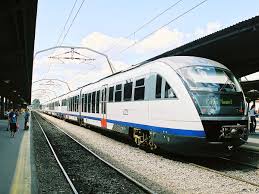
Introduction
Rail transport has long been a cornerstone of the Canadian economy, facilitating the movement of goods and people across vast distances. As a country with a unique geography that spans from the Atlantic to the Pacific, rail provides a vital link between remote regions and urban centers. Recent developments, including federal investments and advancements in technology, have further emphasized the importance of rail for sustainable transportation in Canada and its relevance in addressing environmental challenges.
Current Developments in Rail Transportation
In recent months, Canada’s rail industry has experienced significant updates. The federal government has earmarked $1.4 billion for infrastructure improvements, focusing on the modernization of tracks and stations. This funding aims to increase efficiency, reduce delays, and enhance safety across the rail network.
Furthermore, the rise of intermodal shipping, where goods are transported in standardized containers, has revolutionized the rail freight sector. According to the Canadian Railway Association, railways moved over 330 million metric tonnes of freight in 2022 alone, highlighting its crucial role in the supply chain.
The push towards greener transport has also led to innovations, such as the introduction of electrified rail lines. Eco-friendly electric trains are expected to reduce carbon emissions significantly, aligning with Canada’s commitment to reduce greenhouse gas emissions by 40-45% below 2005 levels by 2030.
Challenges Facing the Rail Industry
While the rail sector is making strides, it still faces challenges. Labor disputes, such as the recent strike threats involving major rail operators, have raised concerns about service interruptions that could impact the economy, particularly in agricultural and mining sectors, which highly depend on rail transport for exporting goods.
Additionally, infrastructure in some areas remains outdated, leading to inefficiencies. Advocacy groups continue to push for greater investments in rail safety and modernization to ensure the system can meet rising demands.
Conclusion
The future of rail transport in Canada is pivotal to both economic growth and environmental sustainability. With ongoing investments and innovations, rail is set to play an even more critical role in the coming years. For Canadians, this means more reliable transportation options and a move towards a greener future. As the rail industry navigates its challenges, ongoing support from the government, stakeholders, and the public will be essential to keep this vital mode of transport thriving.



